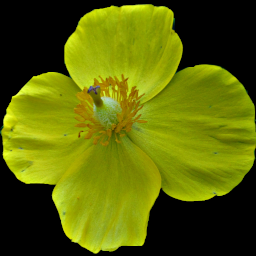 The ordinary color of this flower is deep mahogany red, but in the Squaw Run valley the flowers are almost always white. Occasionally a pink one shows up, as this one did, which was blooming at the beginning of May.
The ordinary color of this flower is deep mahogany red, but in the Squaw Run valley the flowers are almost always white. Occasionally a pink one shows up, as this one did, which was blooming at the beginning of May.
The odor is described in the Flora of North America as “like a wet dog,” which is unmistakable, and accounts for another common name, Stinking Willie. It’s not a flower to sniff with delight.
Gray describes the genus and the species:
TRÍLLIUM L. WAKE ROBIN. BIRTHROOT. Sepals 3, lanceolate, spreading, herbaceous, persistent. Petals 3, larger, withering in age. Stamens б; anthers linear, on short filaments, adnate. Styles awl-shaped or slender, spreading or recurved above, persistent, stigmatic down the inner side. Seeds ovate, horizontal, several in each cell. — Low perennial herbs, with a stout and simple stem rising from a short and praemorse tuber-like rootstock, bearing at the summit a whorl of 3 ample, commonly broadly ovate, more or less ribbed but netted-veined leaves, and a terminal large flower; in spring. (Name from tree, three; all the parts being in threes.) — Monstrosities are not rare with the calyx and sometimes petals changed to leaves, or the parts of the flower increased in number.
Ovary and fruit 6-angled and more or less winged.
Flower pediceled; connective narrow, not produced; leaves subsessile.
Anthers at anthesis exceeding the stigmas.
T. eréctum L. Leaves very broadly rhombic, shortly acuminate; peduncle (2—8 cm. long) usually more or less inclined or declínate; petals ovate to lanceolate (18-36 mm. long), brown-purple or often white or greenish or pinkish; stamens exceeding the stout distinct spreading or recurved stigmas; ovary purple; fruit ovoid, 2.5 cm. long, reddish. — Rich woods, e. Que. to Ont., southw. to Pa. and in the mts, to N. C. — Flowers ill-scented.











